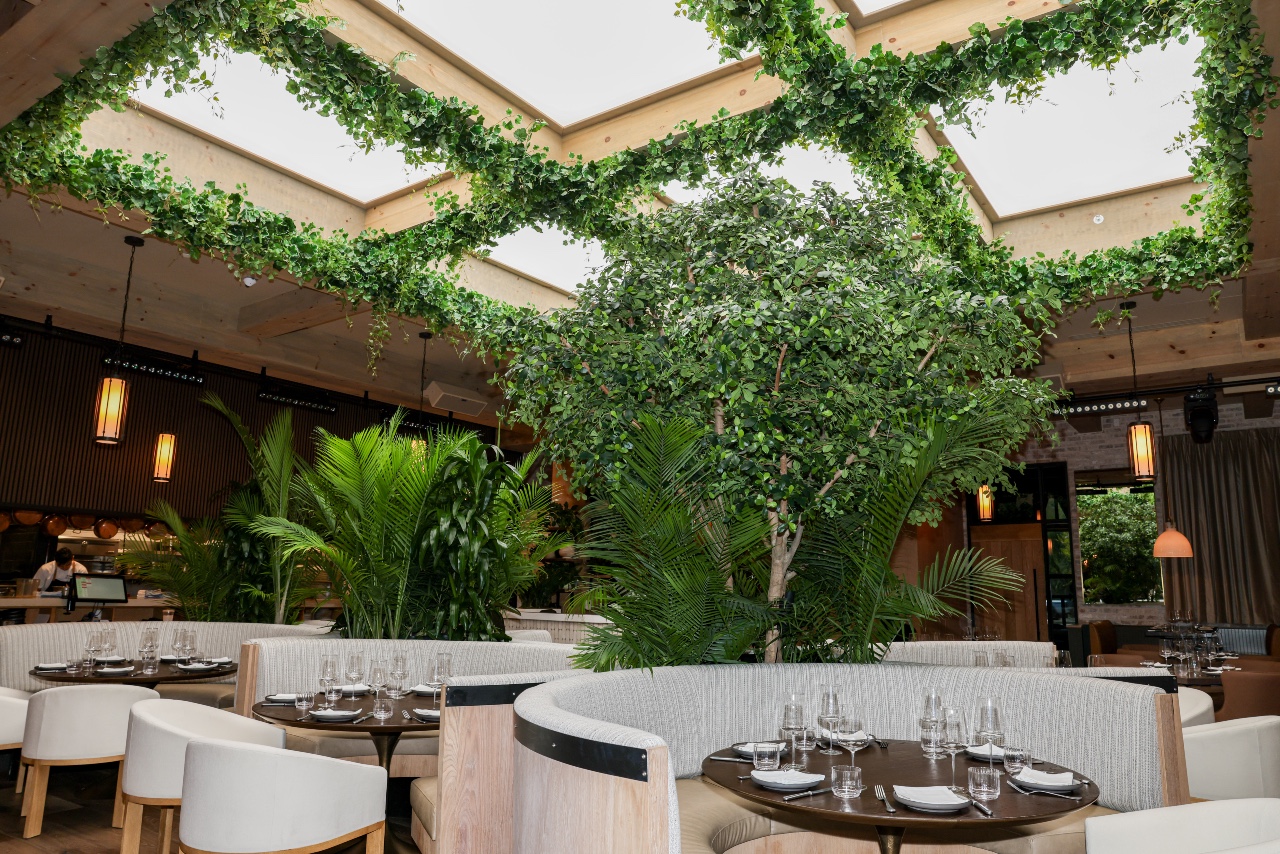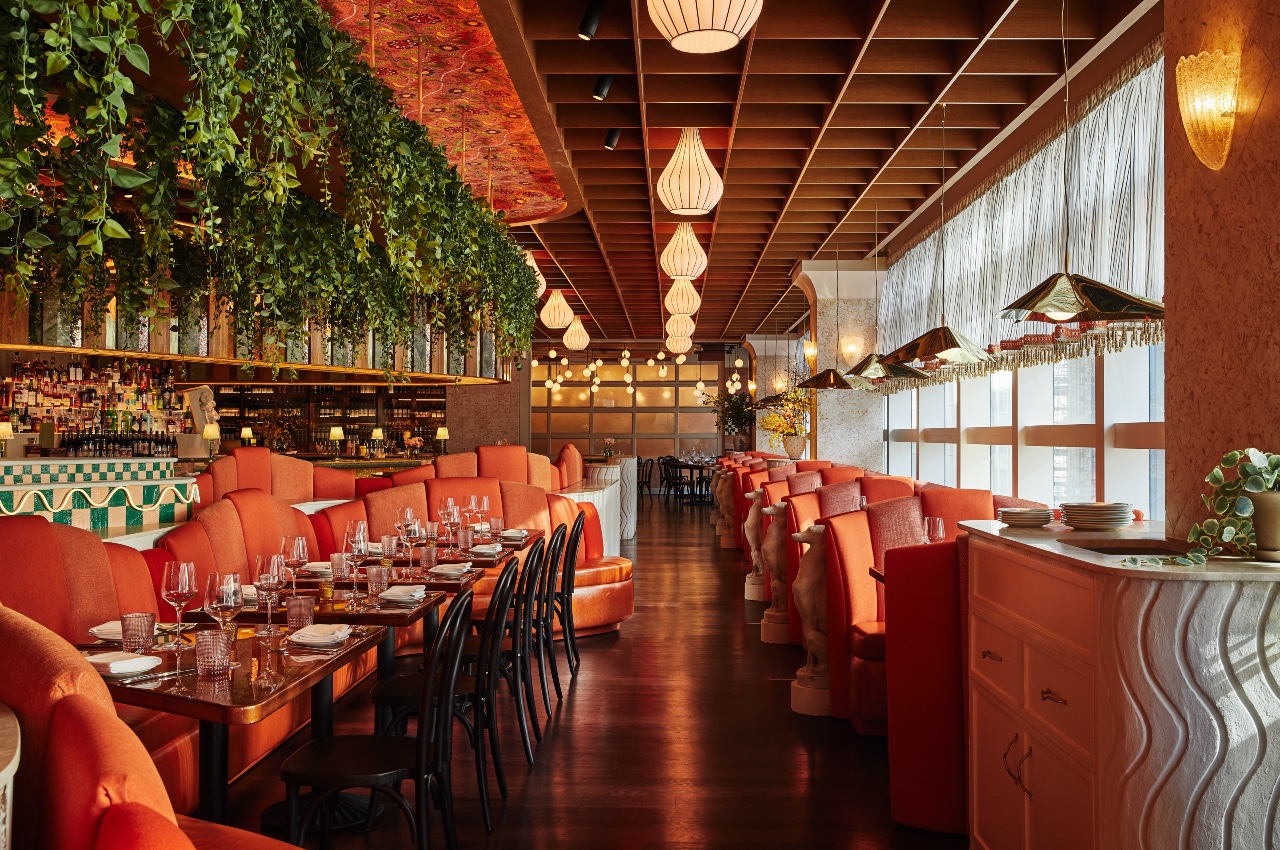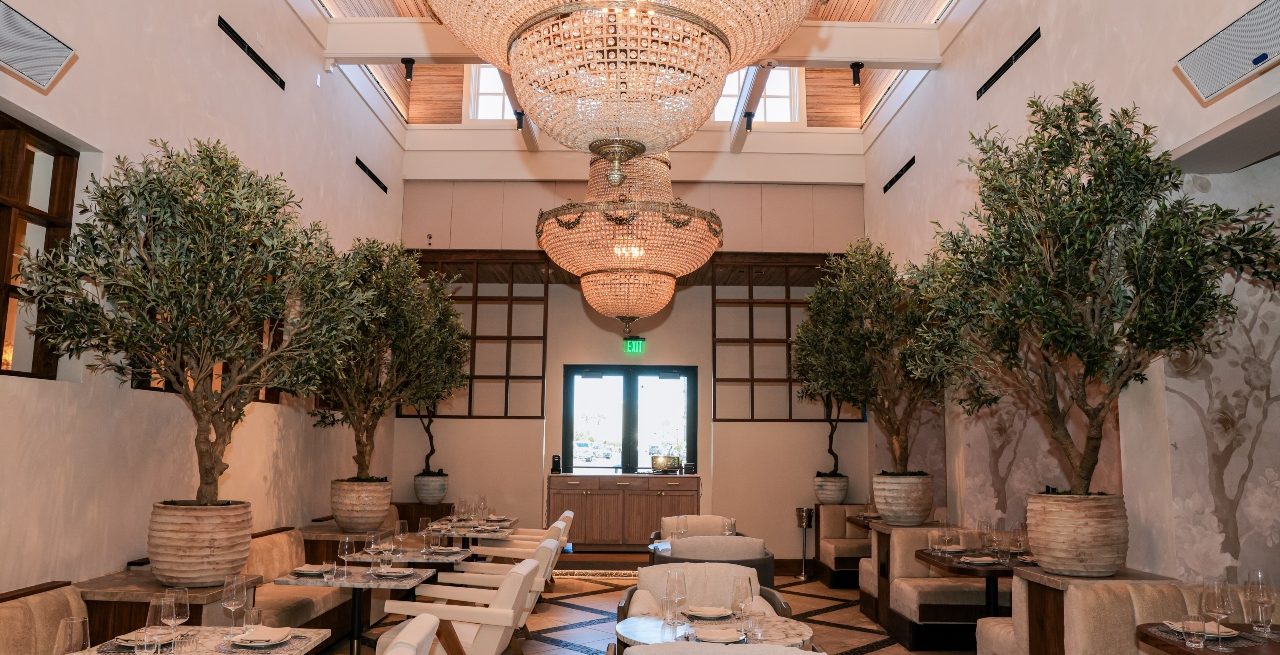Greenery and the Guest Experience
3 Min Read By MRM Staff
Plants are incredible natural problem solvers for restaurants, Jenny Yi, founder and creative behind Chloe + Mint, told Modern Restaurant Management (MRM) magazine.
“Broad-leafed plants can help break up drafts or soften airflow near entryways. Dense, layered greenery can absorb sound and reduce echo,which is especially valuable in open dining rooms. Beyond that, plants improve air quality and create a sense of calm – both of which directly enhance how guests feel in a space.”
Having spent nearly a decade as a florist and event designer, Yi was drawn to the subtle power of plants and their ability to create something living, layered, and emotionally resonant.
“I always felt most inspired by the way plants transform a space – they bring life, movement, and a natural grounding energy that flowers alone couldn’t sustain.”
Plants should never feel like an afterthought; they should feel integrated, almost inevitable.
The name “Chloe + Mint” itself tells a story, Yi explained. “Chloe” symbolizes youth, growth, and new beginnings, while “Mint” suggests vitality, freshness, and longevity.
“Together, they reflect my philosophy that plants aren’t just décor – they’re living elements that tell a story of renewal and connection.”
That philosophy is what drives her artistic plantscape company specializing in hospitality, residential, and commercial interiors. Her work now spans marquee projects in Los Angeles, Chicago, New York, and beyond, including The Guest House and Todo Bien, where plants aren’t just tucked in corners gathering dust, they’re integrated into the identity of the space. Her approach to design is intuitive, yet strategic.
“When I walk into a space, I immediately consider three things: natural light, the architecture, and the intended mood of the room. Plants should never feel like an afterthought; they should feel integrated, almost inevitable. If a space already has strong architectural or design statements, plants can play a more subtle supporting role. But when a room feels flat or lacks warmth, I lean into bold statement pieces – large-scale trees, sculptural arrangements, or cascading greenery – that anchor the energy of the space.”

Layout dictates flow, and flow dictates where plants can thrive, she explains. For example, in bar areas, she uses greenery to soften edges and create intimacy without crowding. In patios, she leans into hardy, sun-loving plants that create shade and ambiance while handling outdoor conditions. For seating layouts, plants can be natural dividers giving diners privacy and warmth without the need for walls.
Collaboration is one of Yi’s favorite parts of the process, whether it’s working with architects, interior design teams, chefs, or owner/operators.
“Every restaurant has its own identity, and I see my role as translating that into a living language through plants. With interior designers, I focus on cohesion – making sure plant textures and forms complement the materials and finishes. With chefs and owners, I ask about their story and the feeling they want guests to take away. With architects, it’s about flow – making sure the placement of greenery enhances circulation and sightlines without disrupting functionality.”
Among the most challenging projects are the ones with extreme conditions such as very low light, limited access for maintenance, or highly trafficked areas where plants are constantly being brushed against, she explained.
“One that stands out was a large restaurant with multiple micro-climates inside: hot kitchens, drafty entryways, and a shaded dining room. It pushed me to think creatively, sourcing the right species for each zone and designing so the plants could thrive long-term. The result was one of the most rewarding transformations we’ve ever done.”

Restaurants are starting to see plants as part of the architecture rather than just accessories as well as using greenery strategically to create comfort, intimacy, and even a sense of wellness, Yi said.
“One major trend is plants as art installations – not just potted in corners, but climbing across ceilings, suspended in frames, or integrated into custom millwork. Guests feel calmer and more connected in spaces that incorporate living design.”
Yi adds that the biggest mistake she sees is treating plants like décor objects instead of living systems. Restaurants sometimes buy whatever looks pretty at the nursery without considering light, airflow, or ongoing care. Another common mistake is scale, either going too small, where plants get lost, or too oversized, where they block circulation, she said.
Choose plants that are forgiving and adaptable to restaurant conditions, Yi suggested.
“Snake plants, ZZ plants, and pothos are classics for a reason – they thrive in a range of light levels and don’t demand constant attention. For a bigger impact, I love ficus Audrey or Dracaena species, which are resilient but still make a statement. And the most important tip: plan for maintenance. Whether it’s in-house training or hiring a professional, healthy plants only stay that way with consistent care. Neglecting maintenance is huge. A struggling plant can hurt the guest experience more than having no plants at all."
Top photo: The Guest House: Nate Guererro by Elevate Agency

